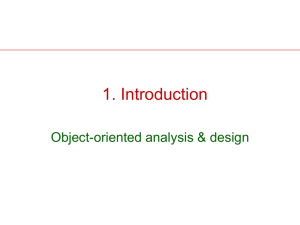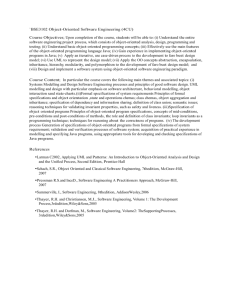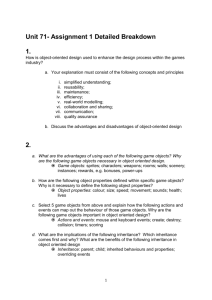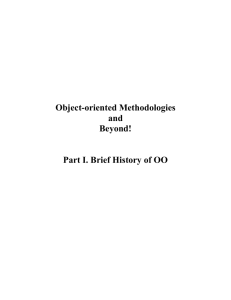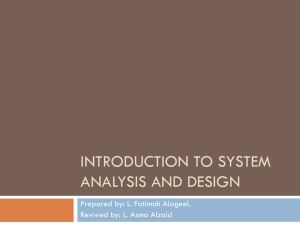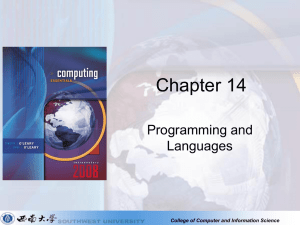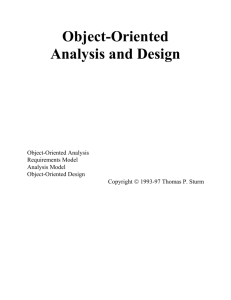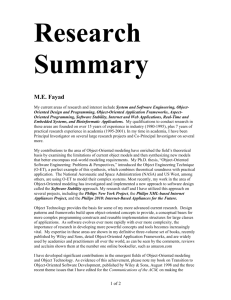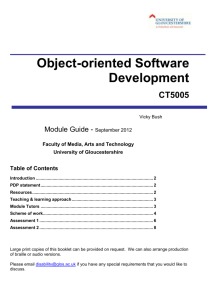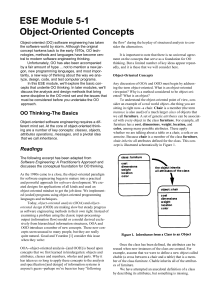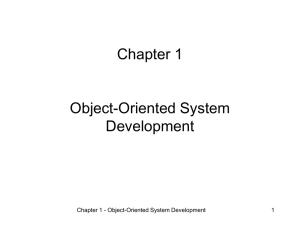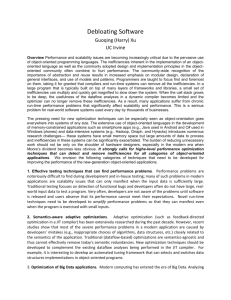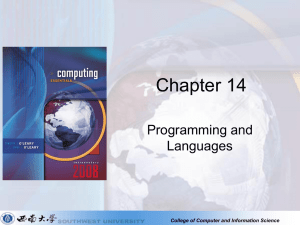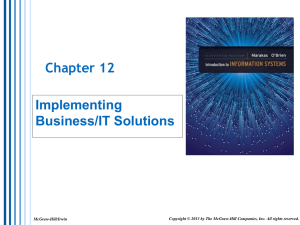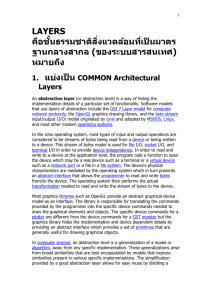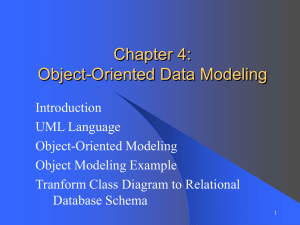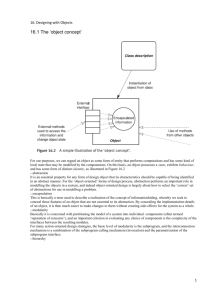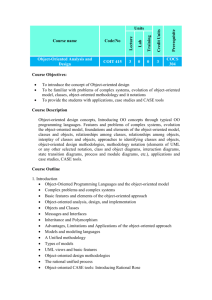OO Scenario-Based Testing
advertisement
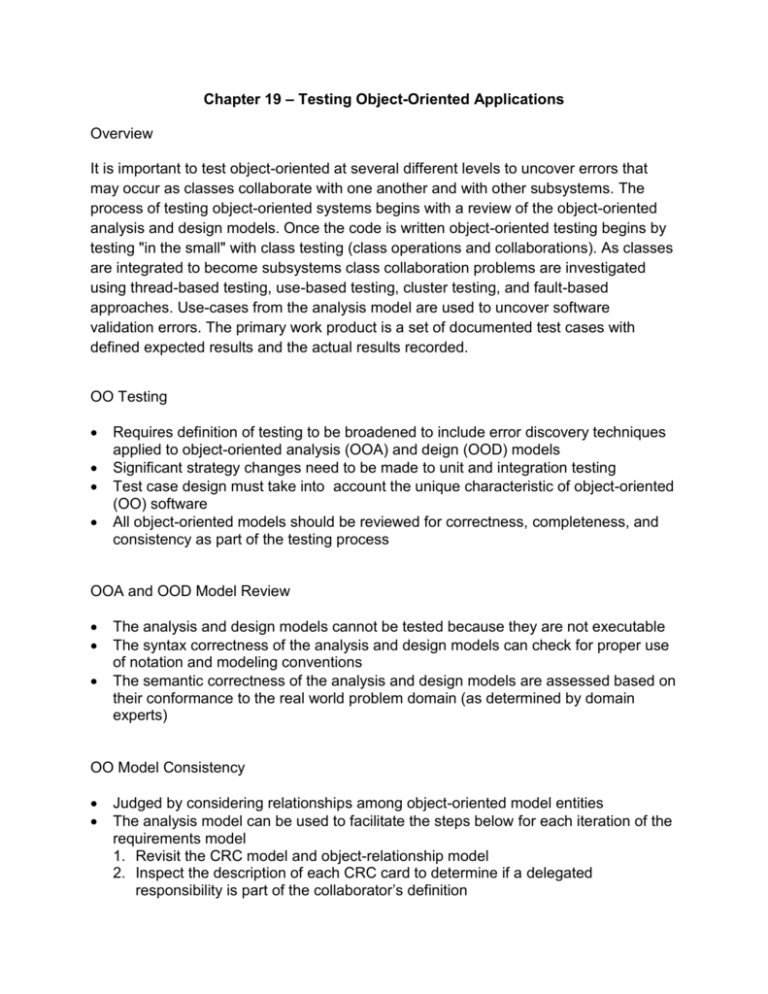
Chapter 19 – Testing Object-Oriented Applications Overview It is important to test object-oriented at several different levels to uncover errors that may occur as classes collaborate with one another and with other subsystems. The process of testing object-oriented systems begins with a review of the object-oriented analysis and design models. Once the code is written object-oriented testing begins by testing "in the small" with class testing (class operations and collaborations). As classes are integrated to become subsystems class collaboration problems are investigated using thread-based testing, use-based testing, cluster testing, and fault-based approaches. Use-cases from the analysis model are used to uncover software validation errors. The primary work product is a set of documented test cases with defined expected results and the actual results recorded. OO Testing Requires definition of testing to be broadened to include error discovery techniques applied to object-oriented analysis (OOA) and deign (OOD) models Significant strategy changes need to be made to unit and integration testing Test case design must take into account the unique characteristic of object-oriented (OO) software All object-oriented models should be reviewed for correctness, completeness, and consistency as part of the testing process OOA and OOD Model Review The analysis and design models cannot be tested because they are not executable The syntax correctness of the analysis and design models can check for proper use of notation and modeling conventions The semantic correctness of the analysis and design models are assessed based on their conformance to the real world problem domain (as determined by domain experts) OO Model Consistency Judged by considering relationships among object-oriented model entities The analysis model can be used to facilitate the steps below for each iteration of the requirements model 1. Revisit the CRC model and object-relationship model 2. Inspect the description of each CRC card to determine if a delegated responsibility is part of the collaborator’s definition 3. Invert the connection to be sure that each collaborator that is asked for service is receiving requests from a reasonable source. 4. Using the inverted connections from step 3, determine whether additional classes might be required or whether responsibilities are properly gouped among the classes. 5. Determine whether widely requested responsibilities might be combined into a single responsibility. Once the deign model is created you should conduct reviews of the system design and object design The system design is reviewed by examining the object-behavior model and mapping the required system behavior against subsystems designed to accomplish the behavior Software Testing Strategy for Object-Oriented Architectures Unit Testing – called class testing in OO circles, components being tested are classes and their behaviors not modules Integration Testing – as classes are integrated into the architecture regression tests are run to uncover communication and collaboration errors between objects o Thread-based testing – tests one thread at a time (set of classes required to respond to one input or event) o Use-based testing – tests independent classes (those that use very through server classes) first then tests dependent classes (those that use independent classes) until entire system is tested o Cluster testing – set of collaborating classes (identified from CRC card model) is exercised using test cases designed to uncover collaboration errors Validation Testing – testing strategy where the system as a whole is tested to uncover requirement errors, uses conventional black box testing methods Comparison Testing Black-box testing for safety critical systems in which independently developed implementations of redundant systems are tested for conformance to specifications Often equivalence class partitioning is used to develop a common set of test cases for each implementation OO Test Case Design 1. Each test case should be uniquely identified and be explicitly associated with a class to be tested 2. State the purpose of each test 3. List the testing steps for each test including: a. list of states to test for each object involved in the test b. list of messages and operations to exercised as a consequence of the test c. list of exceptions that may occur as the object is tested d. list of external conditions needed to be changed for the test e. supplementary information required to understand or implement the test OO Test Case Design White-box testing methods can be applied to testing the code used to implement class operations, but not much else Black-box testing methods are appropriate for testing OO systems just as they are for testing conventional systems OO Fault-Based Testing Best reserved for operations and the class level Uses the inheritance structure Tester examines the OOA model and hypothesizes a set of plausible defects that may be encountered in operation calls and message connections and builds appropriate test cases Misses incorrect specification and errors in subsystem interactions Finds client errors not server errors Class Hierarchy and Test Cases Subclasses may contain operations that are inherited from super classes Subclasses may contain operations that were redefined rather than inherited All classes derived from a previously tested base class need to be tested thoroughly OO Scenario-Based Testing Using the user tasks described in the use-cases and building the test cases from the tasks and their variants Uncovers errors that occur when any actor interacts with the OO software Concentrates on what the user does, not what the product does You can get a higher return on your effort by spending more time on reviewing the use-cases as they are created, than spending more time on use-case testing OO Testing – Surface Structure and Deep Structure Testing surface structure – exercising the structure observable by end-user, this often involves observing and interviewing users as they manipulate system objects Testing deep structure – exercising internal program structure - the dependencies, behaviors, and communications mechanisms established as part of the system and object design Class Level Testing Methods Random testing – requires large numbers data permutations and combinations and can be inefficient Partition testing – reduces the number of test cases required to test a class o State-based partitioning – tests designed in way so that operations that cause state changes are tested separately from those that do not o Attribute-based partitioning – for each class attribute, operations are classified according to those that use the attribute, those that modify the attribute, and those that do not use or modify the attribute o Category-based partitioning – operations are categorized according to the function they perform: initialization, computation, query, termination Inter-Class Test Case Design Multiple class testing 1. For each client class use the list of class operators to generate random test sequences that send messages to other server classes 2. For each message generated determine the collaborator class and the corresponding server object operator 3. For each server class operator (invoked by a client object message) determine the message it transmits 4. For each message, determine the next level of operators that are invoked and incorporate them into the test sequence Tests derived from behavior models o Test cases must cover all states in the state transition diagram o Breadth first traversal of the state model can be used (test one transition at a time and only make use of previously tested transitions when testing a new transition) o Test cases can also be derived to ensure that all behaviors for the class have been adequately exercised


